Related Research Articles
Sugama Sangeetha, a variety of Bhavageethe, is an Indian musical genre in which poetry in the Kannada language is set to music. It gained recognition with the work of P. Kalinga Rao in the mid -20th century. Mysore Ananthaswamy and C. Aswath developed the form further in the 1960s and 1970s.

Kuppalli Venkatappa Puttappa, popularly known by his pen name Kuvempu, was an Indian poet, playwright, novelist and critic. He is widely regarded as the greatest Kannada poet of the 20th century. He was the first Kannada writer to receive the Jnanpith Award.
Bhaavageete or Bhavageeth is a form of poetry and pop music in India. Most of the poetry sung in this genre pertain to subjects like love, nature and philosophy, and the genre itself is not much different from Ghazals, though ghazals are bound to a peculiar metre. This genre is quite popular in Karnataka and Maharashtra. This genre may be called by different names in other languages.

Kikkeri Subbarao Narasimhaswamy commonly known as K. S. Narasimhaswamy, was an Indian poet who wrote in Kannada language. His most popular collection of poems, Mysooru Mallige, has seen more than thirty-two reprints and is sometimes given to newly married couples in Karnataka. Narasimhaswamy is a recipient of the Sahitya Akademi Award, Kannada sahitya Academy Award, and the Asian Prize for literature.
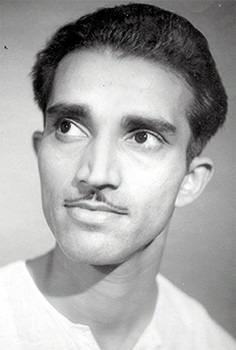
Pandeshwara Kalinga Rao was an Indian Bhavageete and Sugama Sangeetha singer and composer in the Kannada language.
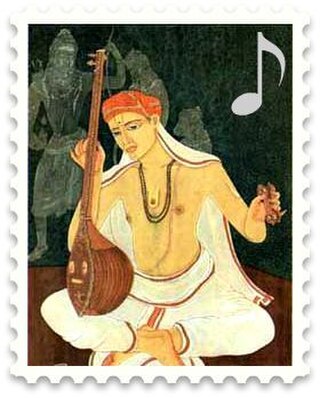
Indian folk music is diverse because of India's enormous cultural diversity. It is sung in various languages and dialects throughout the length and breadth of this vast nation and exported to different parts of the world owing to migration.

Karnataka Rajyotsava, also known as Karnataka State Day, is a public holiday celebrated annually on 1 November in the Indian state of Karnataka. It commemorates the merger in 1956 of the Kannada-speaking regions of southwestern India under the States Reorganisation Act to form the state.

Kuppali Puttappa Poornachandra Tejaswi was a prominent Indian writer and novelist in Kannada. He also worked as a photographer, publisher, painter, naturalist, and environmentalist. He made a great impression in the Navya ("new") period of Kannada literature and inaugurated the Bandaaya Saahitya genre of protest literature with his short-story collection Abachoorina Post Offisu. He is the son of noted Kannada poet Kuvempu.

Ambale Ramakrishna Krishnashastry (1890–1968) was an Indian writer, researcher and translator in the Kannada language. Krishnashastry has remained popular four decades after his death through his work Vachana Bharata, and his narration of the Hindu epic Mahabharata in the Kannada.
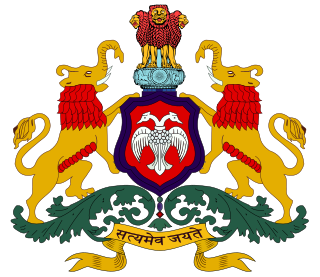
Jaya Bharata Jananiya Tanujate, Jaya he Karnataka Maate (English: Victory to you Mother Karnataka, The Daughter of Mother India!) is a Kannada poem, which was composed by the Indian national poet Kuvempu. The poem was officially declared the state anthem of the Indian state of Karnataka on 6 January 2004.

Guggari Shanthaveerappa Shivarudrappa, or colloquially GSS, was an Indian Kannada poet, writer, and researcher who was awarded the title of Rashtrakavi by the Government of Karnataka in 2006.
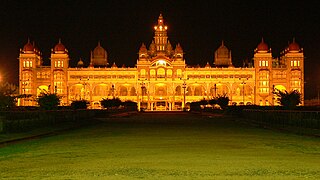
Mysore is a city in the state of Karnataka, India. It is known as the cultural capital of Karnataka. Mysore was the capital of the Wodeyar kings who ruled over the Mysore Kingdom for many centuries. Wodeyars were great patrons of art and music and have contributed significantly to make Mysore a cultural centre. Mysore is well known for its palaces, museums and art galleries and the festivities that take place here during the period of Dasara attract a worldwide audience. Mysore has also lent its name to popular dishes like Mysore Masala Dosa and Mysore Pak. Mysore is also the origin of the popular silk sari known as Mysore silk sari and has also given rise to a popular form of painting known as Mysore painting.

Jayant Kaikini is a poet, short story writer, playwright, columnist in Kannada and a lyricist in Kannada cinema. He has so far published six anthologies of short stories, four books of poetry, three plays and a collection of essays. He is valued as one of the best writers in Kannada literature and has revolutionized the field by giving it a fresh new perspective. He has bagged many notable awards like 'Karnataka Sahitya Academy' award, Kusumagraj Award, Katha Award, DSC Prize for South Asian Literature amidst others. Kaikini is regarded as one of the most significant writers in Kannada today. Kaikini has been conferred the honorary doctorate from Tumkur University.
Raju Ananthaswamy (1973–2009) was a music composer and director. He worked on Sugama Sangeetha for more than 15 years. He was the son of vocalist Mysore Ananthaswamy. He died in 2009, at the age of 35 years.

The Emblem of Karnataka is the state emblem of Karnataka, India. The emblem is based on that of the Kingdom of Mysore is carried on all official correspondences made by the Government of Karnataka.

Devegowda Javaregowda, known as De Ja Gou or simply Javaregowda, was an Indian Kannada writer, folklorist, researcher, scholar and academic. He was disciple of authors T.N. Srikantaiah and Kuvempu. His literary career spans over decades in which he wrote over thirty-four biographies in Kannada language and other works including children's literature. He campaigned for the promotion of Kannada language. He had received Pampa Prashasti (1998), Padma Shri (2001) and the Karnataka Ratna (2008) awards for his contributions in literature and education. He became a centenarian in 2015 and died on 30 May 2016.
At present there is no official flag for the state of Karnataka in India. However a number of historical and cultural flags have been used in the state.
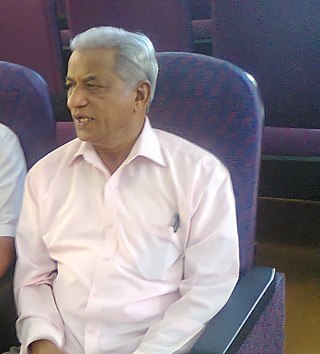
Kallahalli Sannegowda Bhagawan, known as Prof. K. S. Bhagawan, is an Indian Kannada writer, rationalist, translator, critic, scholar and retired professor. In addition to his works on Hinduism, Indian culture and history, he has translated the works of William Shakespeare including Julius Caesar and Hamlet. He is a recipient of many awards including the Rajyotsava Award, Kuvempu Award and the Lokayata Award.
H. K. Narayana was a well-known singer and music composer from Karnataka, India. He was an icon of Light music and played an important role in popularizing the genre of Sugama Sangeetha in Kannada. Nadavirada Baduke by Nissar Ahmed, Brundavanake Haalanu Maaralu by Kuvempu and Shubha Nudiye Shakunada Hakki by D. R. Bendre are some of his well-known numbers. He is popular through Navasuma and Geetaraadhana in Radio.

Taľaku Subbanna Venkannayya was University of Mysore's first Kannada Professor. He was also a popular Kannada writer, translator, editor and teacher who nurtured many later Kannada littérateurs like Kuvempu, D. L. Narasimhachar, T. N. Srikantaiah, K. S. Narasimhaswamy, M. V. Seetharamaiah, C. K. Venkataramaiah, K. Venkataramappa, G. Venkatasubbiah and S. V. Parameshwara Bhatta. In fact, Kuvempu begins his book Sri Ramayana Darshanam with a two-page dedication to his teacher T. S. Venkannayya. T. S. Venkannayya translated the biography of Ramakrishna Paramahamsa from Bengali into Kannada for the first time in 1919. T. S. Venkannayya along with D. V. Gundappa, V. Seetharamaiah, B. M. Srikantaiah and T. N. Srikantaiah were at the forefront of the Kannada Movement from 1920s onwards and were instrumental in the founding of Kannada Sahitya Parishat (Bangalore) and Kannada Sangha at Central College, Bangalore and Maharaja College, Mysore. T. S. Venkannayya was responsible for the organising of the 1931 Kannada Sahitya Sammelan at Mysore.
References
- 1 2 3 4 5 Calendar, The Events. "ಮೈಸೂರು ಅನಂತಸ್ವಾಮಿ". ಕಣಜ. Retrieved 19 August 2019.
- 1 2 Data India. Press Institute of India. 1995. Retrieved 11 August 2019.
- 1 2 Kambanna, Manasa (7 March 2019). "A mandolin meet". The Hindu. Retrieved 11 August 2019.
- ↑ "Govt Favours Ananthaswamy's Naada Geethe". The New Indian Express. 15 September 2015. Archived from the original on 20 November 2015. Retrieved 5 December 2016.
- 1 2 Bureau, The Hindu (23 September 2022). "'Naada Geete' to be sung in the tune composed by Mysore Anantaswamy". The Hindu. ISSN 0971-751X . Retrieved 8 March 2023.
- ↑ "EXCLUSIVE | How state anthem lost its tune". Deccan Herald. 28 November 2018. Retrieved 9 September 2019.